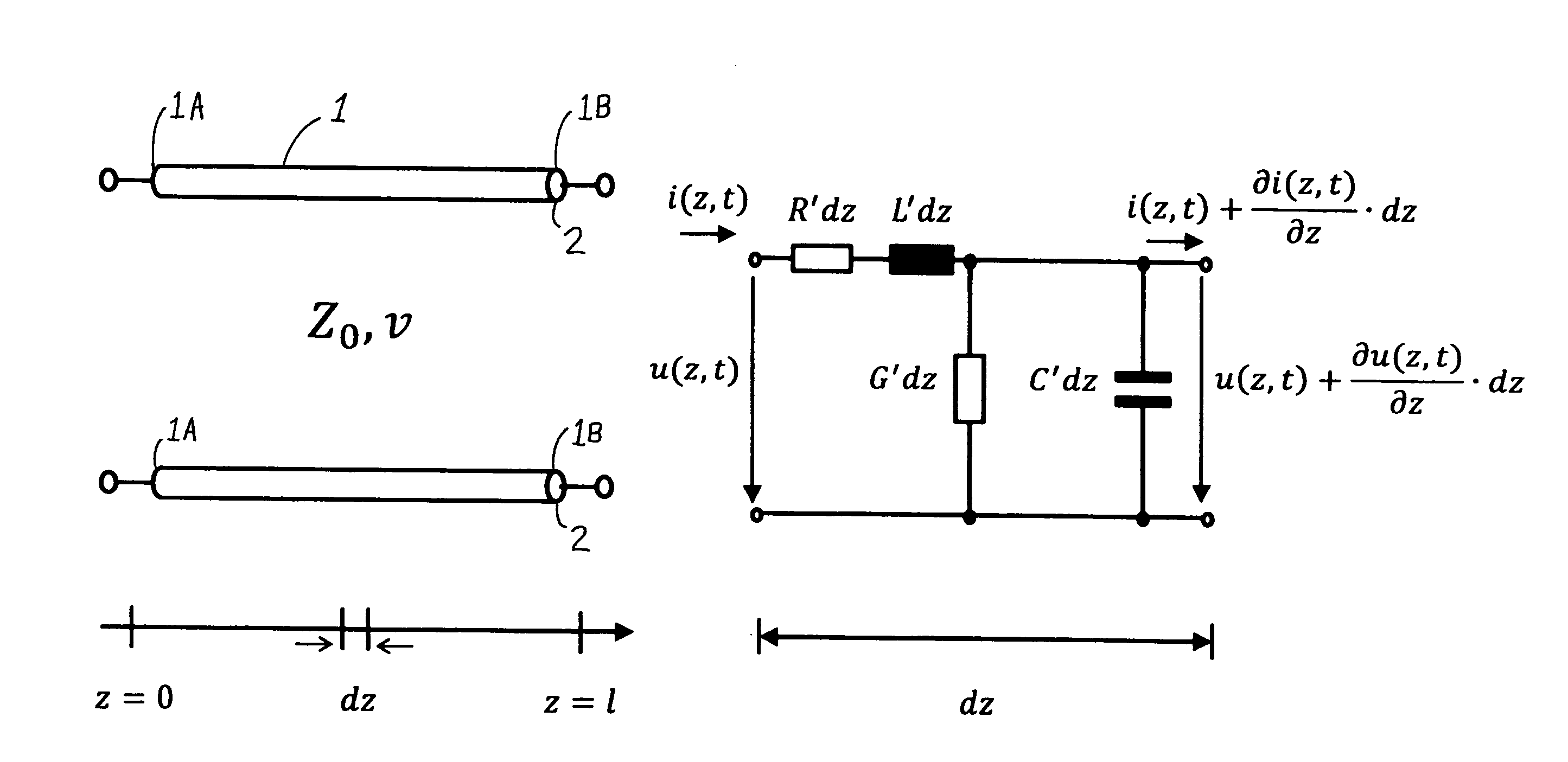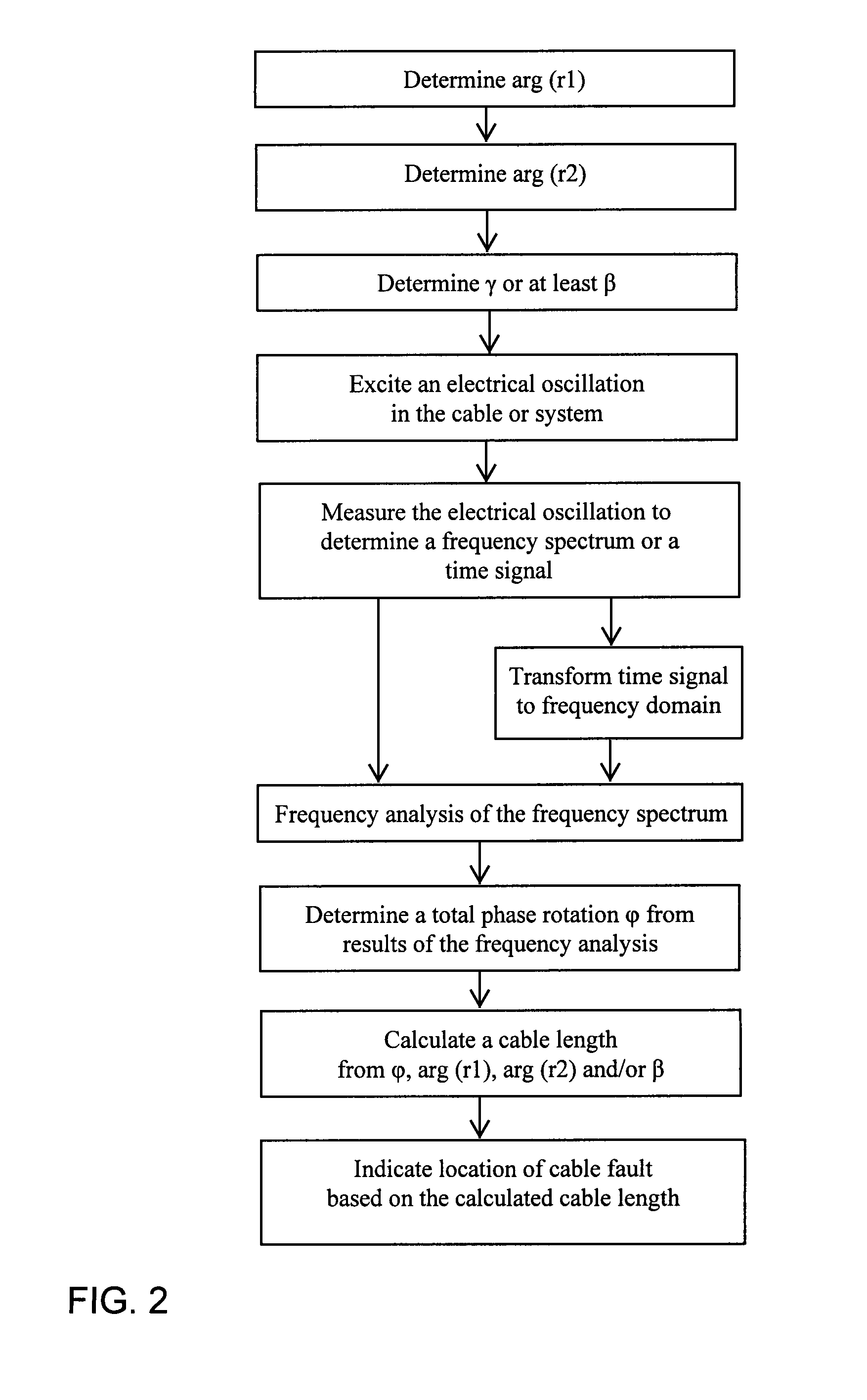Method and Apparatus for Electrically Locating a Fault in a Cable
a technology of fault detection and cable, applied in electrical testing, instruments, electric digital data processing, etc., can solve the problems of interference signals, masking or falsifying small-amplitude reflection signals, and difficult measurement, so as to improve the effect of cable fault detection
- Summary
- Abstract
- Description
- Claims
- Application Information
AI Technical Summary
Benefits of technology
Problems solved by technology
Method used
Image
Examples
Embodiment Construction
[0067]In the schematic diagram of FIG. 1, a test cable 1, i.e. a cable that is to be tested for locating a cable fault 2 therein, is represented physically extending from the physical location or length z=0 at a first cable end 1A of the test cable 1, to the physical location or length z=l at a second cable end 1B of the test cable 1. This second cable end 1B is not a second free end of the total length of the cable, but rather corresponds to a cable fault location of the cable fault 2, because at this cable fault 2 the cable is effectively electrically terminated by a short circuit due to breakdown of the cable insulation by an electrical arc that is ignited during the testing. The purpose of the testing is ultimately to determine the physical length of the cable 1 from the first cable end 1A to the second cable end 1B, i.e. the location of the cable fault 2 along the length of the cable. With that information, it is a simple matter to trace back along the cable from the first cabl...
PUM
 Login to View More
Login to View More Abstract
Description
Claims
Application Information
 Login to View More
Login to View More - R&D
- Intellectual Property
- Life Sciences
- Materials
- Tech Scout
- Unparalleled Data Quality
- Higher Quality Content
- 60% Fewer Hallucinations
Browse by: Latest US Patents, China's latest patents, Technical Efficacy Thesaurus, Application Domain, Technology Topic, Popular Technical Reports.
© 2025 PatSnap. All rights reserved.Legal|Privacy policy|Modern Slavery Act Transparency Statement|Sitemap|About US| Contact US: help@patsnap.com



